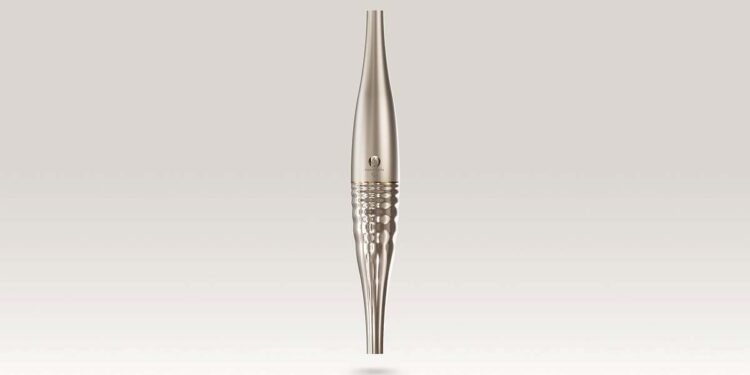On Tuesday morning, the Olympic flame will be lit in front of the Temple of Hera in the city of Olympia. To ignite the fire, an actress in the role of a high priestess will use an instrument that the ancient Greeks called Skaphia, which concentrates the sun’s rays to light the torch. From there, tradition and modernity come together in a torch designed and produced over 2,000 kilometers away by Arcelormittal, in which, despite the Made in France label the project displays, the center that the multinational has in Avilés played a prominent role.
The torch that will be carried by the 11,000 relay runners before the Paris 2024 Olympics was made at the group’s plant in Florange (France); a center that has seen better days when its blast furnaces were still in operation, but which employs more than 2,000 people and still exudes the atmosphere of large industrial cities. The facility, specialized in production for the automotive and packaging sector, has not produced primary steel since 2012 and some people even consider it closed despite working, for example, in galvanizing parts.
In this town in northern France, half an hour from the Luxembourg border, steel made from recycled material was treated at the Chateauneuf center. There, the product is heated and cooled until it reaches a thickness of just 0.7 millimeters, then it is cut, polished, and stamped at the Arcelormittal Woippy facilities, near Metz, also in France. “Steel was more logical than aluminum because its carbon footprint is lower”, say the responsible parties.
The company proudly states that the entire process was carried out on French territory, although Franck Wasilewski, project director at Arcelormittal, admits that some of the work crossed the Pyrenees to be done in Spain. “Once we had Mathieu Lehanneur’s design, the first torch prototypes were seen thanks to the 3D printing teams we have in Avilés (Asturias),” he explains to elEconomista.es.
The details of the torch: 70 centimeters high and weighing 1.5 kilos
From those initial versions, the torch accompanying this piece was created; an instrument 70 centimeters high and weighing 1.5 kilos that will travel throughout French territory, including some overseas territories, before lighting the Olympic cauldron on July 26 in Paris. To avoid leaks, work was carried out in secret throughout the process, with only about twenty people knowing the final destination of the steel being produced.
“It was presented in secret in January, and both the researchers and the workers we employ did so confidentially, both from the technical and artistic perspectives,” adds Jean-Luc Thirion, director of R&D at Arcelormittal.
The publicly-listed group, which also manufactures the Olympic rings at its Dunkirk plant, was chosen for a project in which it did not charge and, according to their estimates, dedicated approximately 8,000 hours of work. Obviously, the image return by positioning itself as a partner of the event took precedence over the economic aspect.
The company must now deliver the different torches produced that, for the first time, will be reusable by several relay runners. According to the company, six times fewer torches will be used than in previous editions of the Olympic Games. “The steel is already all produced, but for safety reasons, we will deliver them little by little to avoid any risk, whether it be theft or an accident,” says Wasilewski.
After the Olympic torches, the Paralympic torches will be manufactured, as the competition does not start until August 28. Arcelormittal will also be responsible for the necessary accessories for this event.
The origin of the Olympic torch
In this way, the torch will be lit for the first time this Tuesday and after traveling Greece for 11 days, it will arrive in France on May 8 through Marseille and will travel through the country until July 26. The fire represents the flame that burned during the ancient Olympic Games on the altar of the sanctuary of the goddess Hestia. Once ignited with the Skaphia, the priestess will hand it over to the first relay runner, Greek rower Stefanos Ntouskos, gold medalist in Tokyo 2021, along with an olive branch. The first relay goes from the Temple of Hera to the Coubertin forest, where the altar where Pierre de Coubertin’s heart is kept is lit, the founder of the modern Olympic Games, and there it is handed over to a representative of the host country of the competition. This 2024 will be the swimmer Laure Manaudou.
Her selection is not random. Beyond the commitment to equality, the torch is marked by the effect of water on its lower half, a choice by the designer, Lehanneur, to combine the presence of both elements in the artifact.


